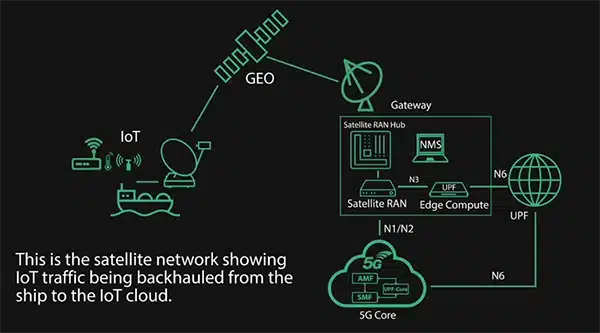5G rollout and its promise of faster, smarter and more connected devices is gradually becoming reality and it’s something that we have been focusing our efforts on at ST Engineering iDirect for some time. The network of networks is still in its relative infancy but will gradually become more prominent in our everyday lives for just about every application you can think of.
It’s been important to us to remain at the forefront of satellite-related activities and developments in 5G. We have a history of working with standards groups such as 3GPP, 5GPP and 5G-MAG and have had deep involvement with initiatives such as Satis5, Sat5G and OSMOSIS to ensure that satellite’s place in 5G is secured, because it will be an indispensable part of the 5G future, enabling ubiquitous and reliable connectivity where other access technologies cannot reach. Satellite 5G will be used for a plethora of use cases.
One such example was recently demonstrated as part of the H2020 iNGENIOUS Project for intermodal asset tracking via a Satellite IoT. Here industry partners came together to demonstrate how IoT sensor data was being tracked from a shipping container on land and at sea over satellite. In the demonstration, the ST Engineering iDirect 5G-enabled ground system provided the satellite backhaul connectivity for the IoT devices to connect to the cloud. The 5G-enabled satellite system included a satellite modem that behaved like a 5G UE to an integrated 5G core network, and was routed, controlled and registered through the 5G Core GUI.
Let’s look at the demo components and how it worked in more detail:
1. Edge network
The edge network included the local network and a standard satellite terminal with a modification to allow the satellite terminal to appear as a 5G UE to the integrated 5G core network. The UE registered using standard 5G signalling NAS procedures.
The satellite terminal was connected to the satellite network using our standard satellite waveforms.
2. Satellite segment
The satellite segment used a live GEO satellite network which connected the satellite terminal to the live satellite hub.
The live satellite hub included the physical layer RF connections for modulation and demodulation of the satellite waveform and also the satellite Radio Access Network (RAN).
The satellite RAN used the existing software stacks to handle the control and user plane aspects of the satellite connection.
In addition, and importantly, the satellite RAN stack was enhanced to support standard 5G N2 and N3 interfaces for control and user plane interfacing with a standard 5G core network.
3. 5G core
The 5G core network used was a standard 5G core network that interfaced via the N2 and N3 interfaces to the satellite RAN for control and user plane operations respectively.
The 5G core was hosted on an enterprise cloud and was responsible for operating the satellite network.
The distributed UPF was hosted within the satellite Hub, allowing the user plane traffic to be routed locally from the satellite hub.
Why is this significant?
This was an important Proof of Concept that demonstrates our advances in 5G and capabilities in terms of the integration of our hub and modem into a 5G core network. This integration is essential as the satellite sector reinforces its status as a critical part of the future 5G connectivity landscape, where seamless switching between different access technologies will ensure that users are connected by the right connectivity type for their requirement.
Visit our 5G Innovations page to watch the full demonstration video to discover how the different pieces fit together.

